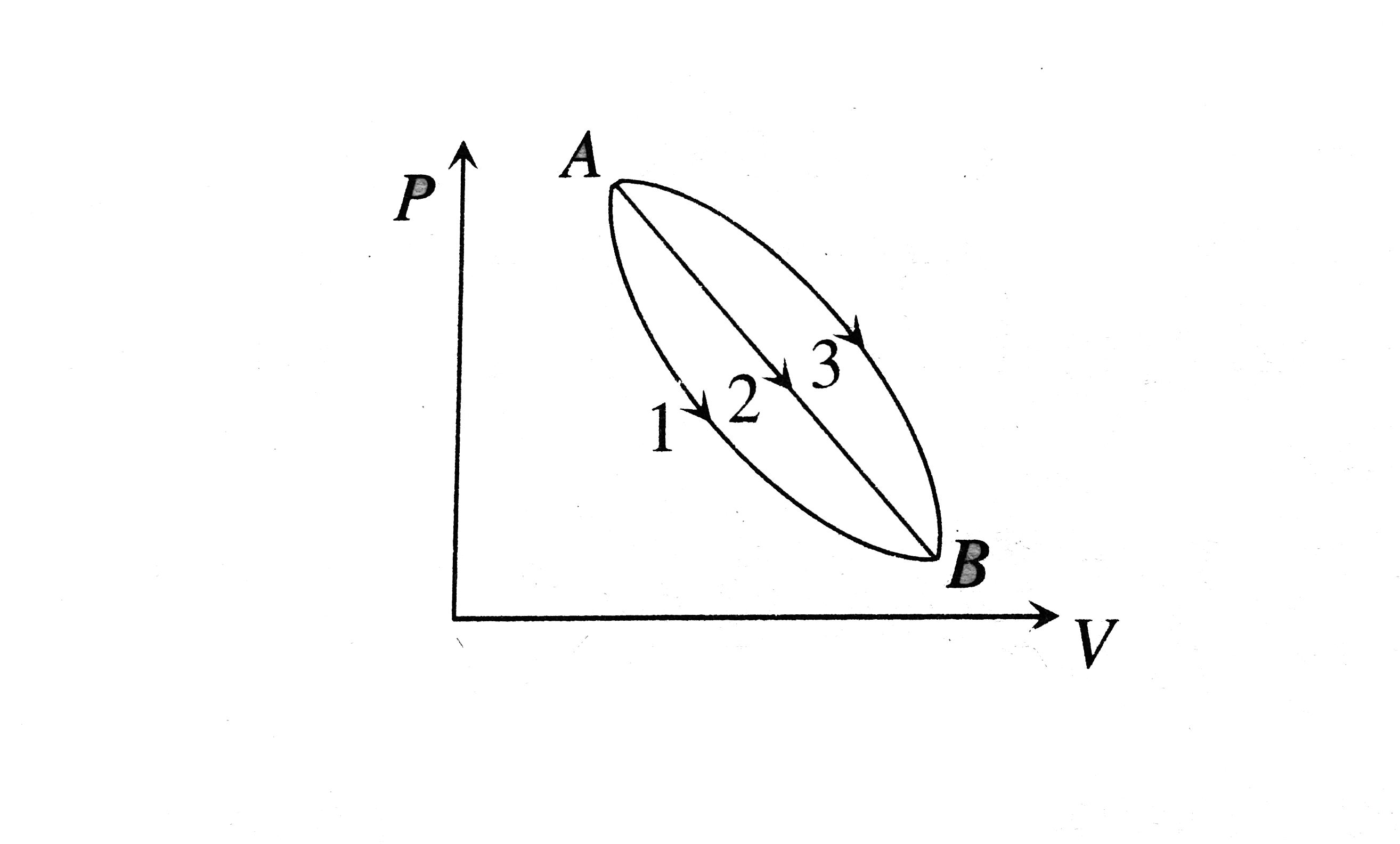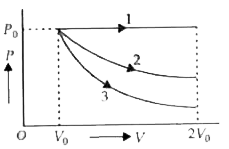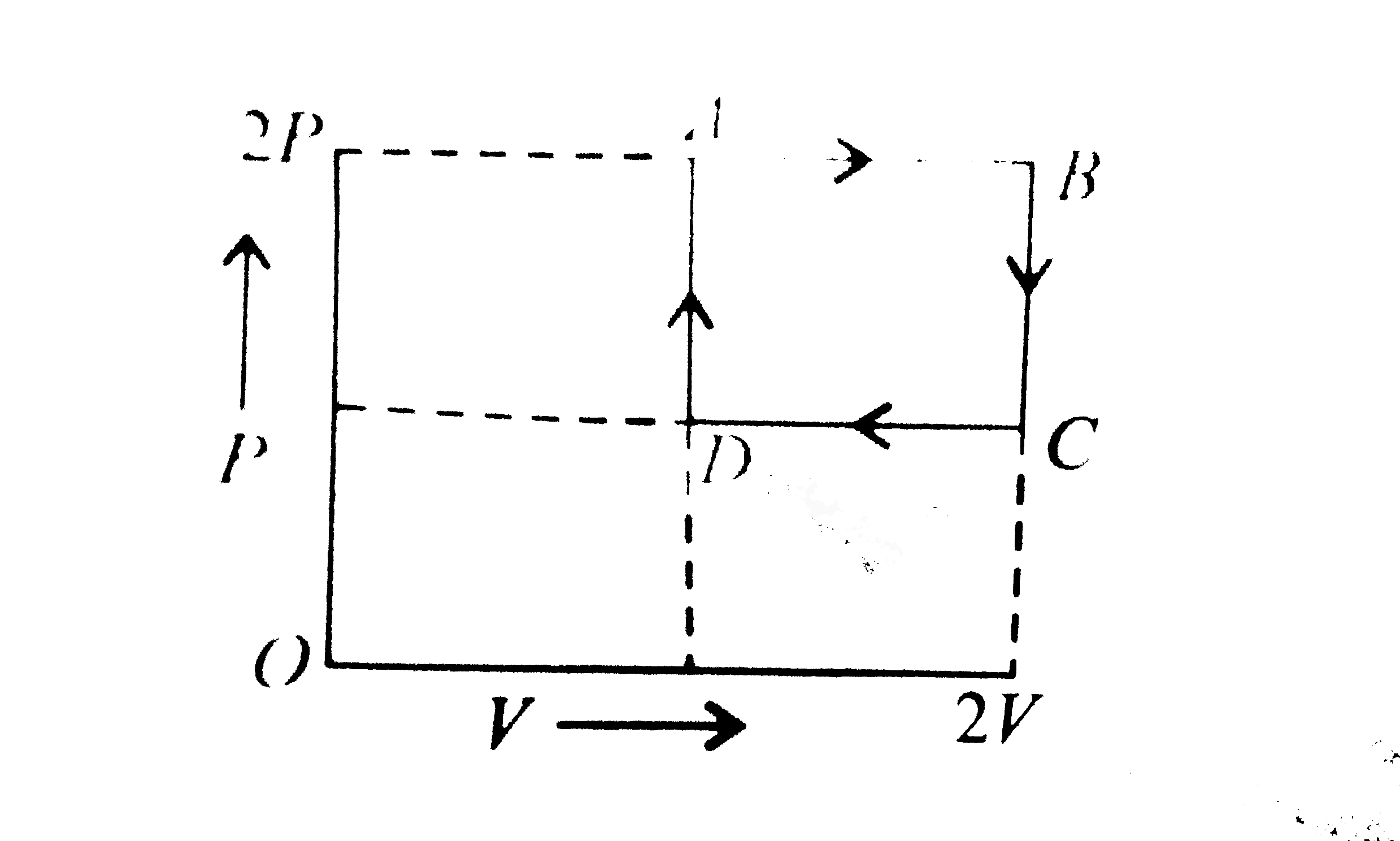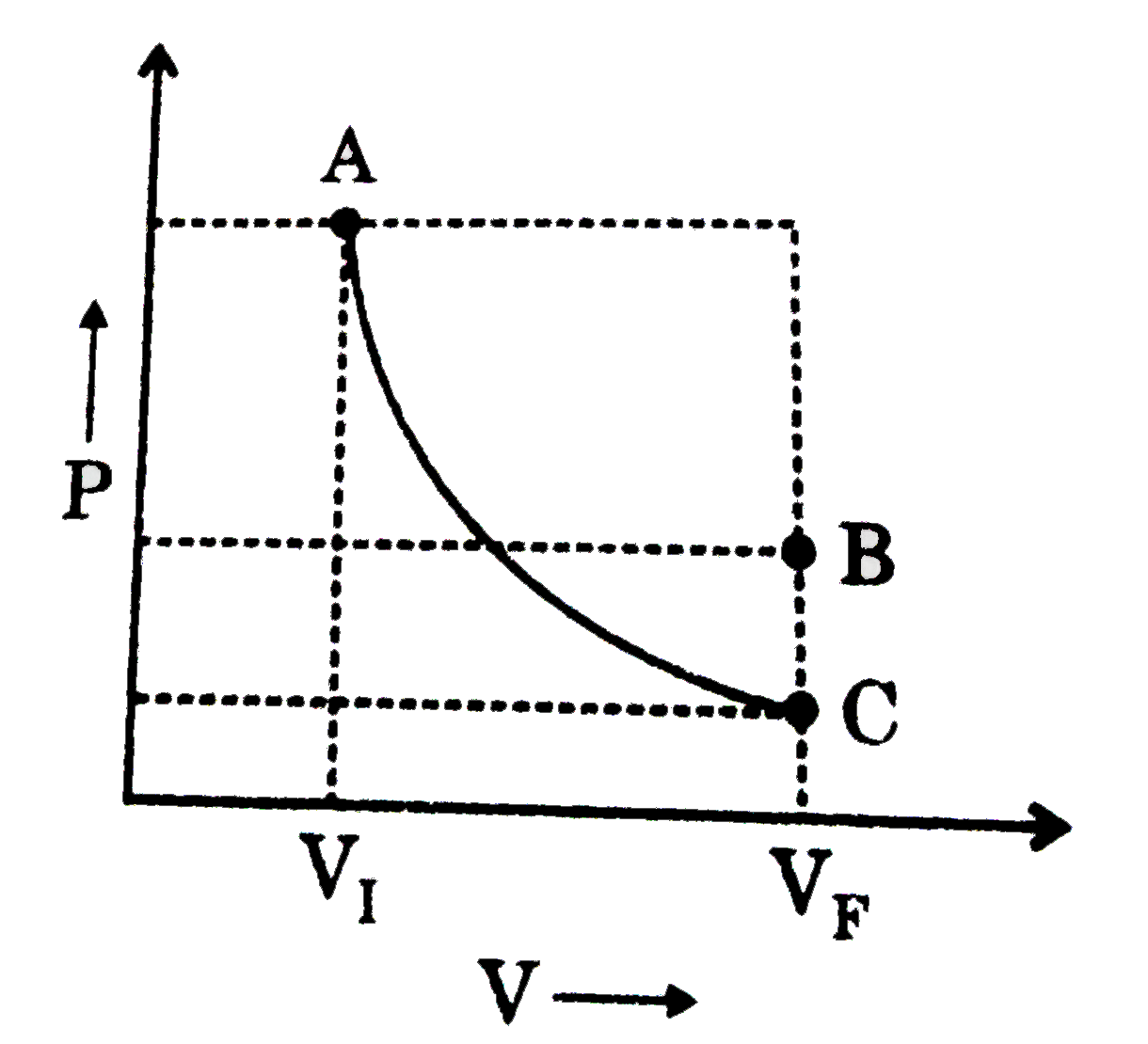A gas expands from state 1 to another state 2 of higher pressure in tow different processes as shown in fig. Which process would require a greater supply of heat from the surroundings?
 .
.
Work done in each constant volume part of the two processes is zero.
For the first process, the work done in the constant pressure part = . From the first law of thermodynamics, the heat supplied from the surroundings during the first process,
Similarly, the heat supplied from the surroundings in the second process,
Now, is the same for the two processes as the initial and the final states are the same. As the final state is at a higher pressure, we have . So,
So the first process would take a greater amount of heat from the surroundings.
Topper's Solved these Questions
- FIRST AND SECOND LAW OF THERMODYNAMICSBOOK - CHHAYA PUBLICATIONCHAPTER - FIRST AND SECOND LAW OF THERMODYNAMICSEXERCISE - Exercise - Multiple Choice Questions (Mark 1)
31 Videos
- FIRST AND SECOND LAW OF THERMODYNAMICSBOOK - CHHAYA PUBLICATIONCHAPTER - FIRST AND SECOND LAW OF THERMODYNAMICSEXERCISE - Exercise - Very Short Answer Type Questions (Mark 1)
53 Videos
- FIRST AND SECOND LAW OF THERMODYNAMICSBOOK - CHHAYA PUBLICATIONCHAPTER - FIRST AND SECOND LAW OF THERMODYNAMICSEXERCISE - Section Related Questions
50 Videos
- EXPANSION OF SOLIDS AND LIQUIDSBOOK - CHHAYA PUBLICATIONCHAPTER - EXPANSION OF SOLIDS AND LIQUIDSEXERCISE - CBSE SCANNER
2 Videos
- FRICTION BOOK - CHHAYA PUBLICATIONCHAPTER - FRICTION EXERCISE - CBSE SCANNER
7 Videos
Similar Questions
An ideal gas of mass m in a state A goes to another state B via three different processes as shown in Fig. If Q1,Q2 and Q3 denote the heat absorbed by the gas along the three paths, then

View SolutionAn ideal gas goes from the state i to the state ∫ as shown in .the work done by the gas during the process

View Solution
Knowledge Check
An ideal gas of mass m in a state A goes to another state B via three different processes as shown in Fig. If Q1,Q2 and Q3 denote the heat absorbed by the gas along the three paths, then
 AQ1<Q2<Q3BQ1<Q2=Q3CQ1=Q2>Q3DQ1>Q2>Q3
AQ1<Q2<Q3BQ1<Q2=Q3CQ1=Q2>Q3DQ1>Q2>Q3An ideal gas goes from the state i to the state ∫ as shown in .the work done by the gas during the process
 Ais positiveBis negativeCis zeroDcannot be obtained from this information.
Ais positiveBis negativeCis zeroDcannot be obtained from this information.A gas is expanded from volume V0 to 2V0 under three different processes, as shown in the figure. Process 1 is isobaric process, process 2 is isothermal and process 3 is adiabatic. Let ΔU1,ΔU2 and ΔU3 be the change in internal energy of the gas in these three processes. Then
 AΔU1>ΔU2>ΔU3BΔU1<ΔU2<ΔU3CΔU2<ΔU1<ΔU3DΔU2<ΔU3<ΔU1
AΔU1>ΔU2>ΔU3BΔU1<ΔU2<ΔU3CΔU2<ΔU1<ΔU3DΔU2<ΔU3<ΔU1
The state of a mole of an ideal gas changed from state A at pressure 2P and volume V follows four different processes and finally returns to initial state A reversibly as shown below in the graph. By interpreting the graph, answer the following questions.

What would be the heat obsorbed by the system in this cyclic process?
View SolutionThe state of a mole of an ideal gas changed from state A at pressure 2P and volume V follows four different processes and finally returns to initial state A reversibly as shown below in the graph. By interpreting the graph, answer the following questions.

Which is the kind of process followed from state A to state, B?
View SolutionAn ideal gas from same initial state participates in two different thermodynamic processes (AC -Reversible, AB-Irreversible) as shown in figure. If the entropy of surroundings remain constant in these processes, then which of the following are correct ?

View SolutionThe state of a mole of an ideal gas changed from state A at pressure 2P and volume V follows four different processes and finally returns to initial state A reversibly as shown below in the graph. By interpreting the graph, answer the following questions.

What would be the heat obsorbed by the system in this cyclic process?
View SolutionThe state of a mole of an ideal gas changed from state A at pressure 2P and volume V follows four different processes and finally returns to initial state A reversibly as shown below in the graph. By intercepting the graph answer the following questions:

Which is the kind of process followed from state A to state B?
View Solution
